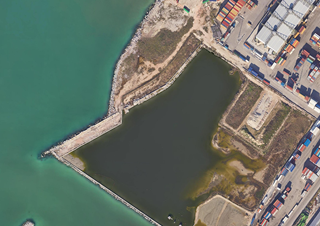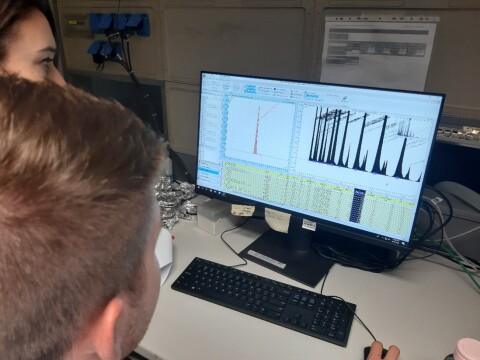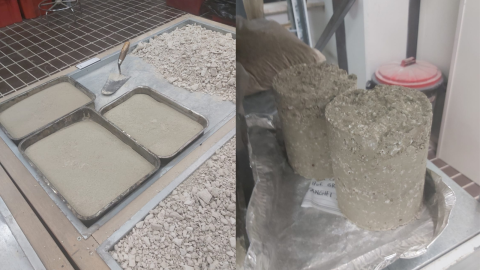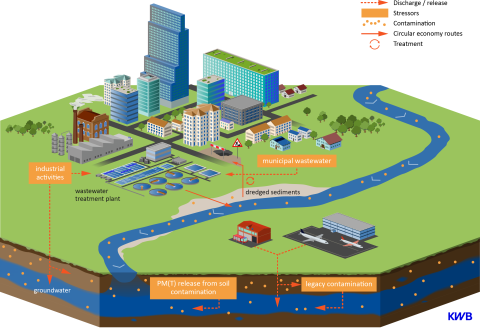CS #5: Removal of PFAS from dredged sediments for material recycling, Ancona
Our aim: demonstrating the effectiveness of proposed technologies to recover safe resources from waste
In line with a Circular Economy, materials can be recovered from dredged sediments which can then be reused in the construction of roads, for example. The premise for this is that the sediments are not contaminated with pollutants such as PFAS. However, knowledge about the fate of PFAS during sediment treatment, the distribution in the treatment products and the treatment options for fractions heavily contaminated with PFAS is currently limited.
Within the concurrent project ECOSEDRA (funded by the Marche Region), a prototype sediment treatment plant fed with 30-50 kg/h of dredged sludge from the Ancona Sea ports was operated. From these sediments, it produced construction materials which could be reused in road embankments. PROMISCES assessed the fate of PFAS during the treatment of sediments.
Concretely, the mass flow of PFAS during the pre-treatment and washing of dredged sediment was determined. PFAS substances in the most contaminated fractions (solid and liquid) was then removed or immobilised by advanced technologies (e.g., ultrasonic cavitation, pyrolysis, immobilisation/stabilisation), providing safe material recovery. Leaching and toxicity tests revealed almost no remaining risks of immobilised PFAS in the recovered materials. The results could help to ensure a safe recycling of sediment materials and a near zero pollution discharge.
Conclusion
We have conducted several experimental tests to assess the removal of PFAS from dredged sediments by simulating treatment operated by the pilot plant ECOSEDRA. Tested sediments included samples collected in the Ancona port and in the Netherland. The removal of PFAS was found to be closely associated with the removal of organic material from sediments, and it was effectively achieved in Ancona sediments, but only partially in sediments from Netherlands, which showed a much higher contamination.
The same tests were repeated at demonstrative-level after completion of the construction of ECOSEDRA pilot plant in Ancona. The ECOSEDRA plant (Figure 1) is based on mechanical treatments to divide sediments in course and fine fractions. Then, fine fractions are cleaned by using different washing solutions (i.e. acid and basic washings).
Hence, we investigated the occurrence of PFAS in the final solid product (recovered sediments) and in the liquid wastes (washing water solutions). Effectiveness of the treatment was evaluated by comparing the detected concentrations of PFAS in clean sediments with the Environmental Quality Standards (EQS) proposed by the proposal EU-COM 540/2022.
Clean sediments after the ECOSEDRA treatment were stabilized by the addition of lime and solidified using concrete. Leaching tests were performed to evaluate release of both organic (e.g. PFAS) and inorganic contaminants (i.e. heavy metals) from the produced material.
Finally, mechanical tests were performed using moulds produced with sediments (Figure 2). Results confirmed that the obtained material has suitable mechanical and environmental characteristics to be reused for road construction.
Thermal treatment using Pyrolysis reactor was also tested at different temperatures as an alternative method to treat sediments. Thermal treatment proved to be an efficient method in terms of PFAS removal from the two texted matrices of dredged sediments; i.e. Ancona and Netherlands.



.png)

